“How to Obtain a Lower TDS Certificate for NRIs on Property Sale”, is a frequently asked question by NRIs and OCIs wanting to sell their property in India.
Read MoreOct, 2024


“How to Obtain a Lower TDS Certificate for NRIs on Property Sale”, is a frequently asked question by NRIs and OCIs wanting to sell their property in India.
Read More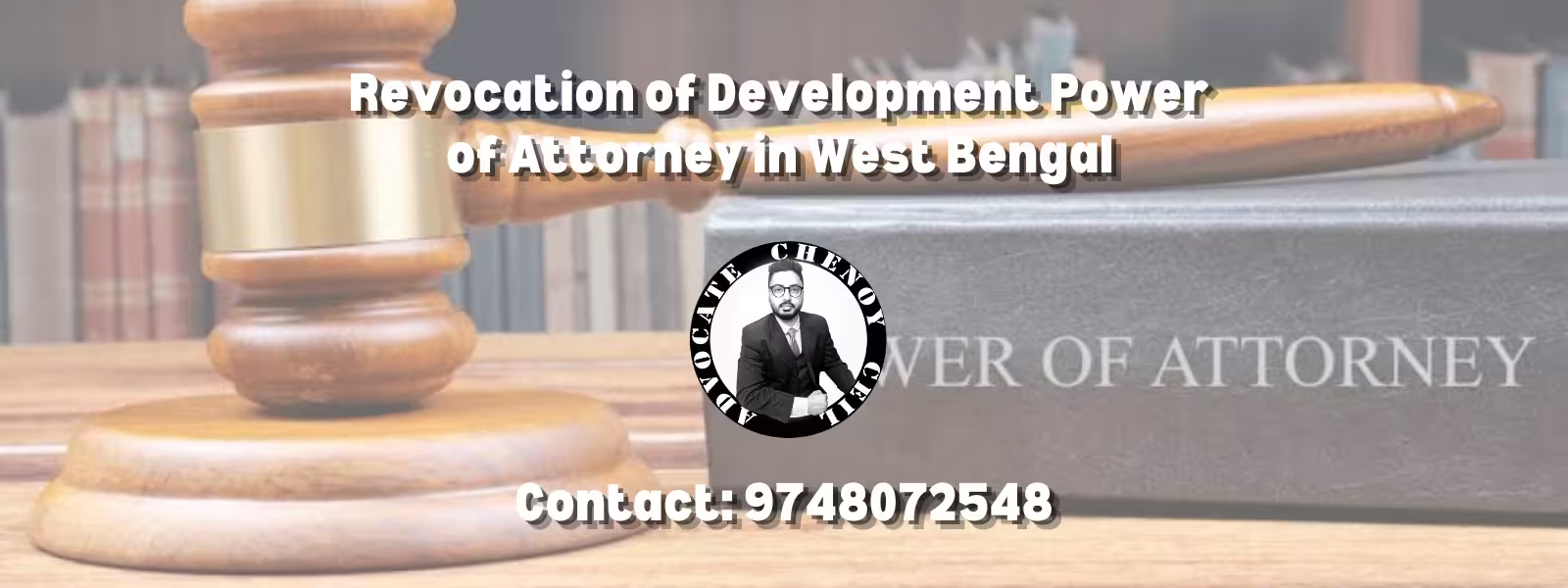
Revocation of Development Power of Attorney in West Bengal impacts property transactions and ownership rights.
Read More
“10 Types of Property Frauds in West Bengal to Avoid during Flat Purchase” is clearly the most asked question for any home buyer in West Bengal.
The Indian real estate sector is witnessing exponential growth, with projections indicating a market value expected to reach INR 65,000 crore by 2040. The real estate sector in West Bengal, like many parts of India, is looking extremely promising at this moment. However, amidst this growth, property frauds in West Bengal remains a significant concern. While the boom in real estate sector offers opportunities for investment and homeownership, it also harbours risks of fraud and deception. To navigate the complex landscape of property transactions, it’s crucial to be aware of the various types of property frauds in West Bengal that buyers may encounter. Here are 10 types of property frauds to avoid during flat purchase in West Bengal, along with detailed explanations and precautionary measures:
Title fraud in property transactions poses a grave threat to the legal ownership rights of homeowners and is considered one of the most serious forms of property frauds in West Bengal. Scammers employ various tactics, including forging property title documents, to deceive unsuspecting buyers and exploit vacant or remotely-owned properties. In one scenario, fraudsters fabricate title documents, claiming ownership or power of attorney over the property, and subsequently sell it to innocent buyers. This deceit often targets properties owned by absentee landlords or those left unattended for extended periods. Once the scam is executed, the fraudster absconds, leaving buyers in legal limbo. Similarly, unscrupulous builders perpetrate title fraud by selling projects on land they do not own, promising lucrative returns and enticing investors with freebies. Victims of such scams realize their plight only after investing substantial sums, finding themselves duped by false promises and manipulated title documents. Additionally, the misuse of power of attorney (PoA) further exacerbates title fraud, with fake representatives selling properties on behalf of absent owners, exploiting the inability of sellers to oversee transactions in person. Such fraudulent practices jeopardize the financial security and legal standing of homebuyers, necessitating stringent measures to safeguard against title fraud, including thorough due diligence, verification of property documents, and engaging reputable developers with a proven track record of integrity and transparency.
To fight against such property frauds in West Bengal or to safeguard yourself during buying a property in West Bengal, get extensive legal counselling by an experienced property lawyer in West Bengal.
Navigating the real estate market poses challenges, with deviations from promised project plans emerging as a prominent concern for homebuyers. While minor discrepancies within a limited range are deemed permissible due to architectural or technical constraints, extensive deviations present significant complications. Such projects encounter hurdles in obtaining essential certificates, potentially leading to property demolition if not approved by relevant authorities. Despite regulatory measures like RERA, deviations persist, necessitating heightened vigilance from buyers. Builders often entice buyers with impressive model apartments and promised amenities, only to deliver subpar facilities upon possession. Common areas, parking spaces, and individual unit layouts frequently deviate from initial promises, leaving buyers grappling with unmet expectations and compromised quality. In response, buyers must exercise thorough scrutiny and assertive action against developers engaging in deceptive practices, safeguarding their investments and rights.
To fight against such property frauds in West Bengal or to safeguard yourself during buying a property in West Bengal, get extensive legal counselling by an experienced property lawyer in West Bengal.
Encroachment emerges as a significant threat in the real estate landscape, posing grave risks to unsuspecting buyers. Beyond title fraud, encroachment represents a serious form of property malpractice wherein developers illicitly occupy unassigned land for construction purposes. This surreptitious activity often goes undetected, with developers clandestinely continuing projects while keeping buyers uninformed about the encroachment. Consequently, homeowners find themselves unwittingly residing on illegally obtained land, a violation of Indian law. Compounding the issue, since the property is registered in the homeowner’s name, recouping losses from the developer proves challenging. Plotted developments are particularly vulnerable to encroachment schemes, with local land mafias targeting unoccupied or absentee-owned land parcels. Scammers exploit loopholes by taking properties on long-term leases or forging ownership documents, perpetuating the cycle of fraud. To mitigate the risk of encroachment, buyers must diligently verify property boundaries and consult resources like the RERA website and town planning bodies for comprehensive builder information, thus safeguarding their investments and property rights.
Rushed sales tactics are often employed by real estate marketers to create a false sense of urgency, compelling investors to make hasty decisions. These tactics capitalize on the fear of missing out, with claims of limited availability or imminent price increases. By pressuring buyers to act quickly, they obscure vital information and manipulate emotions to drive sales. However, succumbing to such pressure can lead to regrettable decisions and long-term financial repercussions as the buyer don’t get required time for the due diligence. While sellers may have genuine reasons for urgency, buyers must exercise caution and conduct thorough due diligence to avoid falling victim to rushed sales tactics. Taking the time to research and understand the property ensures informed decision-making and guards against potential property frauds in West Bengal.
Pre-launch schemes in the real estate sector can often be a breeding ground for fraudulent activities, posing significant risks to unsuspecting investors. These schemes typically involve enticing investors with promises of discounted rates and high returns on investment before the project receives necessary approvals. While legitimate pre-launch offers exist, fraudsters exploit this strategy by selling units in unapproved projects or without any intention of seeking approvals. In such cases, the developer aims to raise funds quickly, often diverting them for other purposes instead of project development. Investors must exercise caution and thoroughly vet pre-launch offers, ensuring that projects are registered under RERA and possess all requisite approvals. Additionally, scepticism towards exaggerated promises of returns can help mitigate the risk of falling prey to pre-launch scams.
Bait and switch, a cunning tactic employed in real estate sales, involves enticing potential homebuyers with advertisements showcasing affordable properties. However, upon inquiry or engagement, these buyers are steered towards higher-priced alternatives, diverging significantly from the initially advertised options. Complaints regarding this scheme often revolve around properties advertised for sale or rent, only to be discovered as unavailable or off-market upon contacting the agent. Such deceptive listings persist online even after the property’s actual sale, underscoring the need for thorough due diligence when navigating the home-buying process. Vigilance is crucial in scrutinizing questionable listings and conducting comprehensive research on property developers. Assessing the developer’s track record, reputation, and project details can help mitigate the risk of falling victim to bait and switch tactics. Prioritizing clarity and transparency in property transactions is essential to safeguarding one’s investment and avoiding fraudulent practices.
To safeguard yourself against such property frauds in West Bengal during buying a property, get in touch with an experienced property lawyer in West Bengal.
Assured returns schemes have become increasingly prevalent in the real estate market in West Bengal, with builders enticing investors with promises of steady returns ranging from 12-15% per annum until property handover, and even beyond possession in some cases. These schemes often involve the issuance of post-dated cheques at the time of investment. However, the true challenge arises when these cheques bounce, leaving investors in a precarious financial situation. Developers resort to such tactics to remain competitive in the market, offering attractive deals like assured rental returns on under-construction properties. Despite the allure of these promises, many investors discover post-possession that the actual rental yield falls short of expectations. Builders manipulate rental listings to inflate figures and entice more buyers, leading to disillusionment among investors upon realizing the discrepancy. Moreover, schemes offering assured returns typically come with higher property rates compared to similar options, making it essential for investors to exercise caution. Additionally, the income generated through such schemes is categorized as income from other sources, further complicating financial matters for investors.
As regulatory measures aim to curb such practices, prospective buyers must conduct thorough research and exercise prudence when considering investments tied to assured returns schemes in the real estate market. An experienced property lawyer in West Bengal can help the homebuyers to protect themselves against such property frauds in West Bengal.
In the realm of real estate, inordinate delays in possession after payment represent a pervasive issue that continues to plague homebuyers, particularly in the domain of under-construction properties. While certain delays may be justifiable due to factors like labour or material shortages, natural disasters, or socio-political unrest, many builders resort to providing false excuses driven by their own profit motives. The lack of regulatory oversight enables unscrupulous builders to divert funds from investors towards the acquisition of additional land rather than the intended purpose of project construction. Despite the implementation of regulatory measures like RERA, which aims to curb such malpractices, the problem of prolonged delays persists, leaving homebuyers in a state of limbo. Builders often attribute delays to bureaucratic hurdles in obtaining approvals from civic authorities, deflecting accountability from their own mismanagement. Consequently, homebuyers find themselves in precarious situations, having already invested substantial sums with no tangible progress in sight. The ramifications of these delays extend beyond financial strain, as affected individuals contend with the added burden of paying rent alongside interest on home loans. Moreover, the legal recourse available to aggrieved parties often entails protracted legal battles, further exacerbating their plight.
With numerous instances of delayed projects inundating courts across West Bengal, prospective homebuyers must exercise vigilance and due diligence under the guidance of an experienced property lawyer in West Bengal to mitigate the risks associated with inordinate delays in real estate projects or any such property frauds in West Bengal.
Fake or false promises, a common tactic employed by developers to entice potential buyers, pose significant risks to unsuspecting investors in the real estate market. Builders often capitalize on the competitive nature of the market by making exaggerated claims and offers designed to inflate the perceived value of a property. These promises may include assurances of below-market rates, guaranteed returns on investment, swift delivery within unrealistic timeframes, buy-back schemes, and penalty clauses for delays. However, it’s essential for buyers to exercise caution and scepticism before succumbing to these enticing offers. While these promises may seem compelling at first glance, there is no guarantee that the builder will fulfil them. In many cases, developers may use investors’ funds to pursue other ventures or generate higher returns, leaving buyers empty-handed. Real incidents underscore the perils of placing blind trust in such promises, with builders often failing to honour their commitments due to financial mismanagement or insolvency. Additionally, buyers should remain vigilant for red flags such as exaggerated amenities, unfeasible completion dates, and hidden charges not disclosed in the initial agreement.
By adopting a discerning approach and conducting thorough due diligence under the guidance of an experienced property lawyer in west Bengal, investors can safeguard themselves against the pitfalls of false promises in the real estate sector or any such property frauds in West Bengal.
False documents represent a significant threat to the integrity of real estate transactions, posing grave risks to unsuspecting buyers. Dishonest developers and real estate brokers frequently resort to forging counterfeit documents to facilitate the sale of properties that may not legally belong to the seller. These fraudulent practices encompass a wide range of documents, including sale deeds, occupancy certificates, and building plan approvals, among others. By presenting fabricated paperwork to buyers, developers and agents seek to absolve themselves of any accountability for the transaction’s outcome, effectively washing their hands of responsibility. Moreover, the use of fake documents not only undermines the validity of the sale but also places homeowners in a precarious position, as they may be held liable for unknowingly engaging in transactions based on falsified information. To mitigate the risks associated with false documents or any such property frauds in West Bengal, buyers must exercise vigilance and diligence in thoroughly examining all property-related paperwork. This entails scrutinizing each document for authenticity and verifying its legitimacy through independent channels or seeking legal assistance from an experienced property lawyer in West Bengal. By adopting a cautious approach and conducting meticulous due diligence, buyers can safeguard themselves against the perils of fraudulent documentation in real estate transactions.
Buying a home is a significant milestone, both financially and emotionally. However, the real estate sector in West Bengal is plagued by property fraud, perpetrated by dishonest developers, brokers, and lenders. Kolkata police have initiated a case following a complaint by a private bank on Theatre Road, alleging that six flats in a four-storey building located in Khardah were sold to 125 buyers who secured home loans from the same bank, subsequently defaulting on their monthly repayments. The alleged cheating scheme involved the use of genuine KYC documents by buyers to obtain loans, with the developer selling the same flats to multiple buyers, altering property nomenclature and sizes to evade detection. As a result, the bank was defrauded of approximately Rs 1.2 crore. Despite the bank’s right to possess the property upon loan default, complications arose as multiple buyers, including those from other banks, had secured loans against the same property, preventing any bank from taking possession. The arrest of eight individuals reveals the involvement of a larger racket, including the developer and fake purchasers utilizing authentic documents to facilitate fraudulent home loan transactions.
When such reprehensible property frauds in West Bengal are happening, it is becoming more and more important for the homebuyers to safeguard their investment with the help of an experienced property lawyer in West Bengal.
In conclusion, the article sheds light on the pervasive and intricate nature of property fraud in West Bengal, illustrating the various tactics employed by unscrupulous builders and developers to exploit unsuspecting homebuyers and how the investors can safeguard themselves against such property frauds in West Bengal. From title deception and project plan deviations to forged documents and unwarranted delays, the real estate landscape is rife with risks that necessitate vigilance and thorough due diligence from prospective buyers. The case highlighted involving multiple buyers securing loans against the same property underscores the magnitude of the issue and the dire consequences it can entail for both financial institutions and individuals. As the real estate sector continues to burgeon in West Bengal, it becomes imperative for regulators, developers, and buyers alike to collaborate in implementing stringent measures to curb fraudulent practices and uphold the integrity of property transactions. By fostering transparency, accountability, and regulatory compliance, stakeholders can work towards creating a more secure and trustworthy real estate environment conducive to sustainable growth and consumer confidence. Ultimately, awareness, diligence, and collective action are paramount in safeguarding against property frauds in West Bengal and preserving the interests of all stakeholders in the real estate ecosystem.
For more guidance related to buying a flat in West Bengal, click here.

Terminating commercial lease in Kolkata and West Bengal involves navigating through various legal intricacies outlined in statutes and court precedents.
Read More
Advantages and disadvantages of a Section 8 company helps you decide whether such organisations can be the right choice for social causes.
Read More
Application of Commercial Courts Act, 2015 in West Bengal reflects a concerted effort to modernize India’s legal framework for commercial dispute resolution.
Read More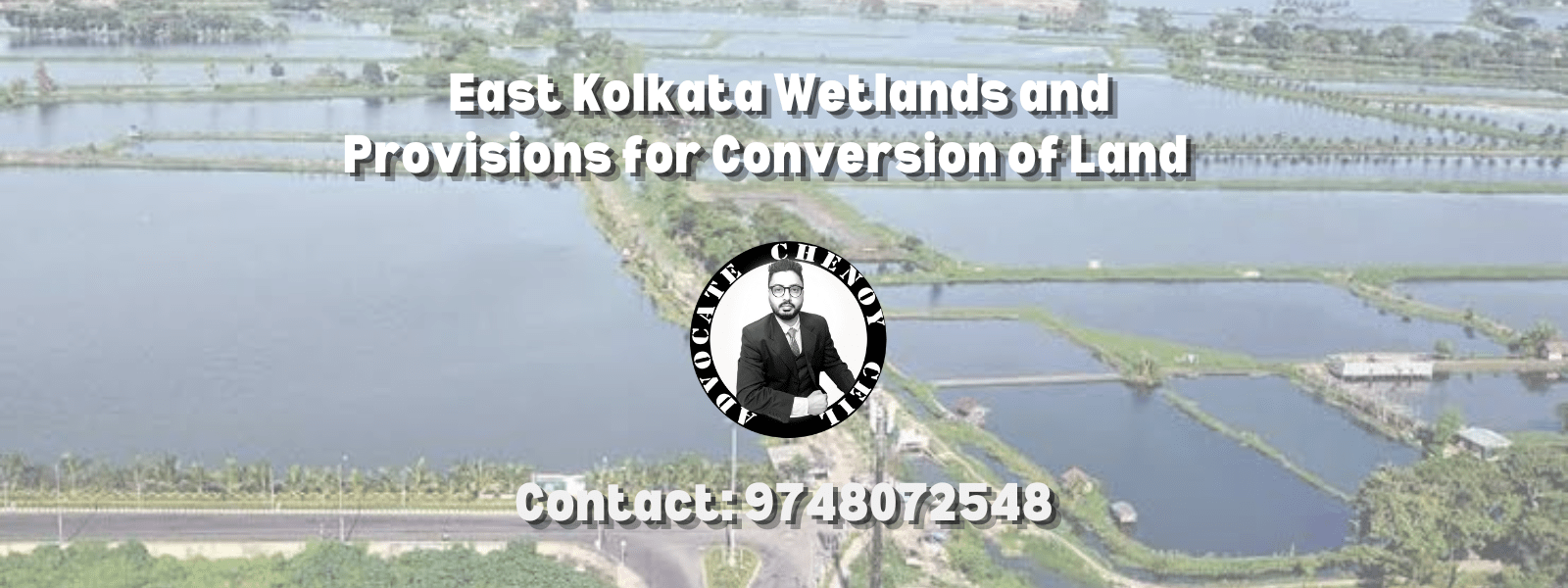
East Kolkata Wetlands and provision for conversion of land is an important aspect to understand how wetlands are governed within West Bengal.
Read More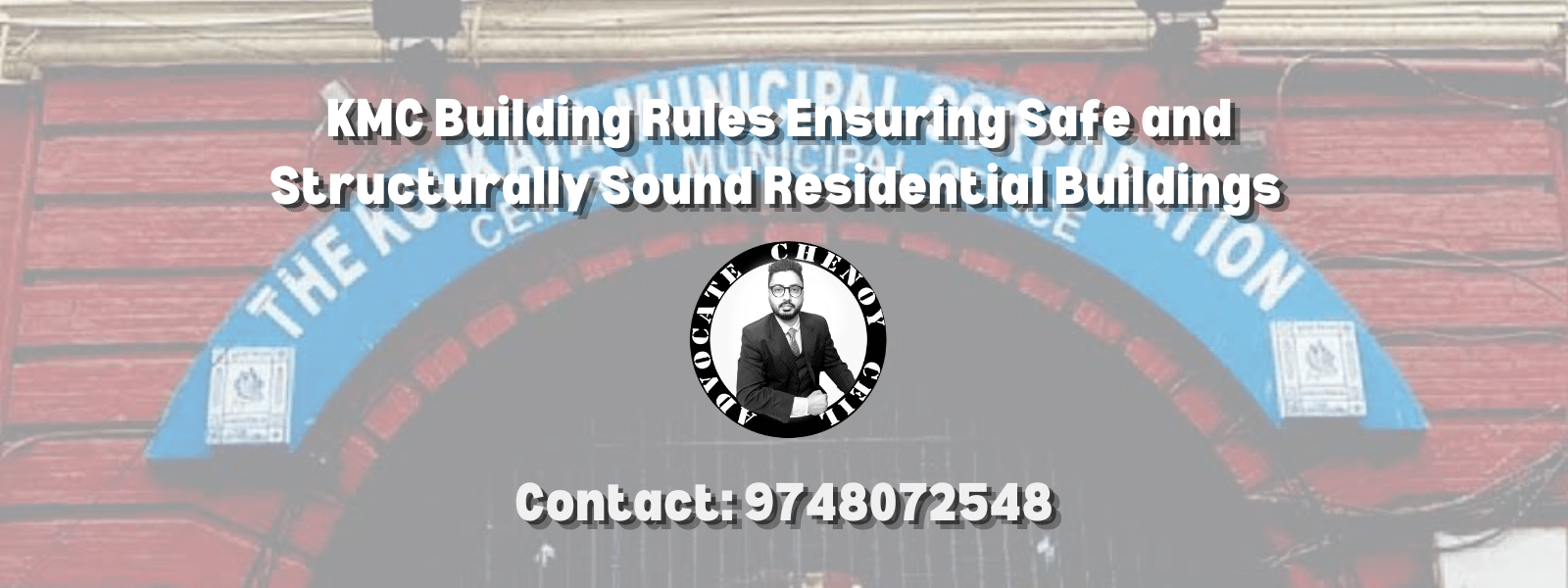
KMC building rules ensuring safe and structurally sound buildings help to protect occupants, promote sustainability and enhance community resilience in Kolkata.
As one of India’s bustling urban hubs, Kolkata boasts a rich tapestry of architectural marvels, from towering skyscrapers to quaint residential dwellings. However, amidst this diversity lies a crucial mandate: ensuring the safety, security, and well-being of its citizens. The Kolkata Municipal Corporation (KMC) has risen to this challenge by implementing a comprehensive set of regulations known as the Kolkata Municipal Corporation Building Rules, 2009. In this article, we delve into the intricate framework of the KMC Building Rules, shedding light on their importance and implications for the city’s urban landscape.
The Kolkata Municipal Corporation (KMC), as the governing body of the metropolitan city, has established a comprehensive framework of regulations governing all types of construction activities within its jurisdiction. These regulations encompass a wide array of crucial aspects, including building permits, restrictions on building height, zoning regulations, and standard floor area ratio. Additionally, the KMC’s building rules encompass specific guidelines for constructing boundary walls, basements, parking lots, kitchens, bathrooms, bedrooms, and open areas in residential buildings. Compliance with these regulations is mandatory for all construction projects undertaken in Kolkata, ensuring adherence to safety protocols and maintaining structural integrity.
March 5, 2024, marked a significant milestone in Kolkata’s urban development trajectory as the Kolkata Civic Body unveiled a ground-breaking initiative. In a bid to widen adjacent roads and enhance vehicular movement, the KMC announced an incentivized scheme for landowners. Those willing to donate a portion of their land to the civic body would receive additional Floor Area Ratio (FAR) during construction. This initiative not only underscores the pivotal role of landowners in urban development but also aligns with the KMC’s vision for safer and more accessible neighbourhoods.
Central to the KMC’s regulatory framework is the definition of residential buildings. These structures, encompassing single-family dwellings, multi-family units, hostels and group housing complexes, serve as the cornerstone of urban habitation. The KMC’s meticulous guidelines for residential construction aim to ensure occupants’ safety and comfort, laying the foundation for harmonious community living.
To get the residential building sanctioned by the KMC, one must follow the steps mentioned below:
Beyond residential edifices, the KMC Building Rules extend their purview to include commercial, industrial, institutional, assembly, and hazardous buildings. Each category is subject to specific regulations tailored to address the unique challenges and requirements associated with diverse building types.
The Kolkata Municipal Corporation (KMC) Building Rules meticulously outline regulations concerning boundary walls encircling buildings. These guidelines mandate that every building must be encased by a boundary wall or fence to delineate property lines and uphold the privacy and security of occupants. Stipulations within these rules specify both minimum and maximum heights for boundary walls, contingent upon building type and location. Residential buildings, for instance, are mandated to have a boundary wall with a minimum height of 1.5 meters and a maximum of 2.75 meters. Conversely, commercial and industrial structures are subject to minimum heights of 2.75 meters and maximum heights of 3.65 meters. Moreover, the regulations dictate the distance at which the boundary wall must be erected from the road and adjacent buildings, with residential structures requiring a minimum distance of 1.2 meters and commercial or industrial buildings necessitating a minimum distance of 2.4 meters. Additionally, the KMC rules prescribe the use of durable materials such as brick, stone, or concrete for boundary wall construction to ensure structural integrity and resilience against natural elements.
In adherence to the Kolkata Municipal Corporation (KMC) Building Rules, boundary walls play a pivotal role in demarcating property lines and safeguarding privacy and security. These regulations mandate the construction of boundary walls or fences around every building to uphold occupants’ privacy and safety. The rules stipulate specific parameters for boundary wall height, contingent upon the type and location of the structure. For residential buildings, the minimum height of the boundary wall is set at 1.5 meters, with a maximum height of 2.75 meters. Conversely, commercial and industrial buildings must adhere to minimum heights of 2.75 meters and maximum heights of 3.65 meters. Furthermore, the KMC regulations dictate the minimum distance from the road and neighbouring buildings for boundary wall construction, with residential structures requiring a minimum distance of 1.2 meters and commercial or industrial buildings necessitating a minimum distance of 2.4 meters. Additionally, the rules mandate the use of robust and approved materials such as brick, stone, or concrete to ensure structural durability and resilience against environmental factors like wind and rain.
In accordance with the Kolkata Municipal Corporation (KMC) Building Rules, the permissible height of a building is contingent upon the width of the road it fronts. For structures facing roads with widths up to 9 meters, the maximum allowable height stands at 11 meters. Buildings situated along roads spanning 9 to 12 meters in width are limited to a maximum height of 15 meters. Similarly, buildings facing roads ranging from 12 to 18 meters wide can extend up to 24 meters in height. Notably, for buildings facing roads exceeding 18 meters in width, the maximum permissible height is extended to 45 meters. Additionally, the KMC’s regulations dictate the minimum height requirements for rooms within buildings. In residential settings, habitable rooms must have a minimum height of 2.75 meters, while non-habitable rooms are mandated to maintain a minimum height of 2.4 meters. These stipulations ensure uniformity in building heights while prioritizing safety and liveability standards within structures.
Basements play a crucial role in many building structures, and the Kolkata Municipal Corporation (KMC) Building Rules provide detailed regulations regarding their construction and utilization in Kolkata. According to these guidelines, the construction of basements is permissible only in buildings with a plot size of at least 40 square meters. Additionally, the rules stipulate that the basement area should not exceed 50% of the ground floor area of the building to ensure structural stability. Prior to construction, approval from the KMC Building Department is mandatory. The department conducts thorough inspections of the site and reviews the construction plan to ensure compliance with regulations. Furthermore, specific guidelines are outlined for the utilization of basements within buildings. Basements can be utilized for various purposes such as storage, parking, or even as habitable spaces. However, if intended for habitation, basements must adhere to specific requirements including adequate ventilation, lighting, and access to natural light to ensure occupant safety and comfort. These stringent regulations aim to uphold building integrity and ensure safe and functional basement spaces within Kolkata’s urban landscape. The construction of the basement must adhere to the specifications outlined in the West Bengal Fire Services Act of 1950, along with the Fire Prevention and Safety Rules of 1996. Additionally, it must conform to the standards set forth in the national building codes.
The West Bengal Municipal Building Rules 2024 outline specific regulations regarding parking areas within buildings. According to these rules, parking facilities must be situated on the ground floor or within the building’s basement. The design of the parking area should prioritize accessibility for vehicles and user convenience. Additionally, regulations mandate proper ventilation, adequate lighting, and effective drainage facilities to prevent water accumulation within the parking area. Furthermore, the KMC Building Rules specify minimum dimensions for parking spaces, which vary based on the type of vehicle. For instance, car parking spaces must have a minimum width of 2.75 meters and a length of 5 meters, while two-wheeler parking spaces should be at least 1.2 meters wide and 2.5 meters long. Moreover, the rules emphasize the necessity of providing sufficient manoeuvring space within the parking area to facilitate safe entry and exit for vehicles. These stringent guidelines aim to ensure the functionality and safety of parking facilities within buildings as per KMC regulations.
In adherence to the Kolkata Municipal Corporation (KMC) Building Rules, kitchens must be constructed as separate rooms with meticulous attention to ventilation, lighting, and drainage facilities. These regulations dictate that kitchens should have a minimum height of 2.75 meters and a minimum floor area of 7.5 square meters to ensure adequate space and functionality. Furthermore, kitchens must be equipped with both natural and artificial lighting sources and be adequately ventilated to prevent the accumulation of smoke and odours. Specific requirements are outlined for the installation of gas stoves within kitchens, mandating that they be placed in a separate area with proper ventilation and connected to the gas supply through a gas regulator. Additionally, gas stoves must be installed at a safe distance from other appliances, ensuring adequate clearance from walls and ceilings to mitigate potential safety hazards. These stringent guidelines aim to uphold safety standards and ensure optimal functionality within kitchen spaces as per KMC regulations.
Kolkata Municipal Corporation (KMC) Building Rules pertaining to bathrooms encompass various aspects including size, layout, and ventilation standards. According to these guidelines, each dwelling unit must include at least one bathroom, with a minimum floor area of 1.5 square meters. Additionally, bathrooms must be well-ventilated, with provisions for natural light and air through the installation of exhaust fans or windows. Furthermore, the KMC mandates the use of waterproof materials in bathroom construction to prevent water damage, with proper drainage facilities and sloped floors ensuring effective water removal. The drainage system must connect to a proper sewage system to maintain hygiene standards and prevent water accumulation, emphasizing the importance of cleanliness and sanitation. All bathroom fixtures, including toilets, washbasins, and showers, must be regularly cleaned and sanitized to mitigate the spread of diseases. Strict guidelines for waste disposal are also outlined to uphold hygiene standards within bathroom facilities as per KMC regulations.
The Kolkata Municipal Corporation (KMC) has established specific guidelines for open areas within residential structures, emphasizing the importance of proper design and maintenance to ensure usability and safety. According to these guidelines, open spaces should be well-ventilated, with sufficient provision for natural light and air circulation. Additionally, the design of open spaces should prioritize accessibility and safety, particularly for vulnerable populations such as children and the elderly. These measures aim to create environments that are conducive to leisure and recreation while ensuring the well-being of residents within residential complexes.
The Kolkata Municipal Corporation (KMC) has established guidelines regarding the maximum permissible ground coverage for various occupancies or user groups based on plot size. For residential buildings, the maximum ground coverage is set at 60% for plots up to 200 square meters and 50% for plots of 500 square meters or more. Similarly, educational and institutional buildings are allowed a maximum ground coverage of 50% and 40%, respectively, with slight variations based on plot size. Additionally, for plots measuring between 200 square meters and 500 square meters, the percentage coverage is calculated through direct interpolation. For larger plots exceeding 5000 square meters, the maximum permissible ground coverage is reduced to 45% for residential buildings and 35% for other occupancies, including mixed occupancy. However, for buildings on plots of 5000 square meters, an additional ground coverage of up to 15% may be allowed for car parking and building services, such as A.C. plant rooms and generator rooms, subject to compliance with relevant rules and regulations. This additional coverage is exclusively reserved for car parking, ramps, staircases, lifts, and essential building services, not exceeding 5% of the total additional coverage.
Floor Area Ratio (FAR) stands as a fundamental component of building regulations in Kolkata, as established by the KMC. These guidelines ensure that constructions within the city meet specific standards. FAR represents the ratio of a building’s total floor area to the size of the land it occupies, impacting density and building height. It’s synonymous with Floor Space Index (FSI). The KMC aims to foster sustainable and orderly urban development by setting precise FAR guidelines, crucial for preventing overcrowding and maintaining adequate space for residents and visitors. Enforcing these regulations ensures buildings are functional and visually appealing.
The KMC mandates adherence to FAR regulations for property owners and developers in Kolkata. These rules uphold construction standards and ensure city infrastructure’s safety and efficiency. Covering diverse aspects such as permissible construction materials and space allocation for different building types, the rules also restrict building sizes to prevent overcrowding and maintain ample movement space. They set limitations on building height and the number of floors permitted per structure to preserve the city’s aesthetic and functional integrity. Recently, the KMC revised building regulations to allow additional parking space construction beyond FAR limits in projects exceeding 1,00,000 sqft. Formerly, parking space wasn’t included in FAR calculations, but now, up to 40 percent of required parking space can be constructed without affecting FAR. Any excess beyond this limit will contribute to the overall FAR for the plot. As determined by the Mayor-in-Council, the floor area ratio must be in compliance with the West Bengal Town and Country (Planning and Development) Act, 1979.
B. Deviation in Individual Floor Height:
2. Fees for Unauthorized Structures with Sloped Roofs:
3. Excess Ground Coverage Fees: Rs. 500/- per Sqm. for residential and Rs. 1000/- per Sqm. for other than residential, beyond permissible limits as per Building Rules.
Effective Area Charges
The Kolkata Municipal Corporation’s Building Rules 2024 epitomize its commitment to fostering safe, sustainable urban environments. Adherence to these regulations is paramount for architects, builders, and homeowners, ensuring structures are not only aesthetically pleasing but also structurally sound and conducive to well-being. By embracing these guidelines, stakeholders collectively contribute to Kolkata’s evolution as a safer, more liveable metropolis for generations to come.
For more information and guidance on KMC building rules, get in touch with an experienced property lawyer in Kolkata and West Bengal, or click here.
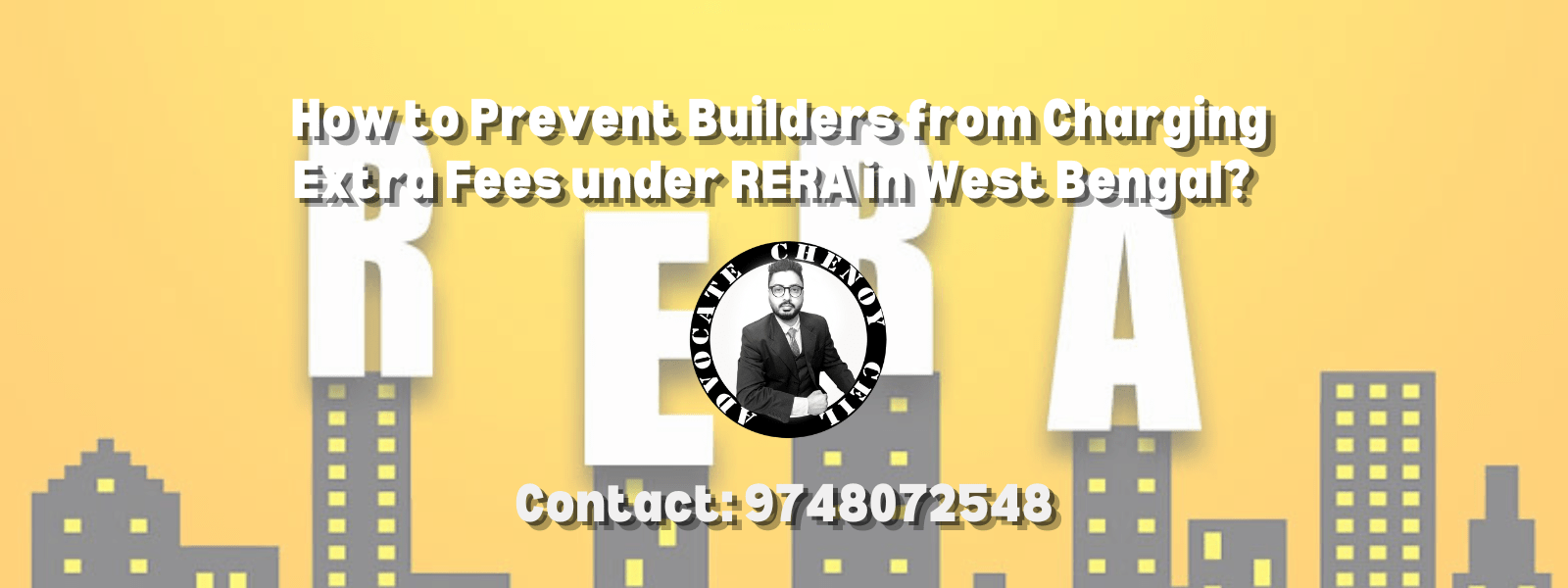
“How to prevent builders from charging extra fees under RERA in West Bengal?” is a frequently asked question by the flat or apartment buyers in West Bengal.
Read More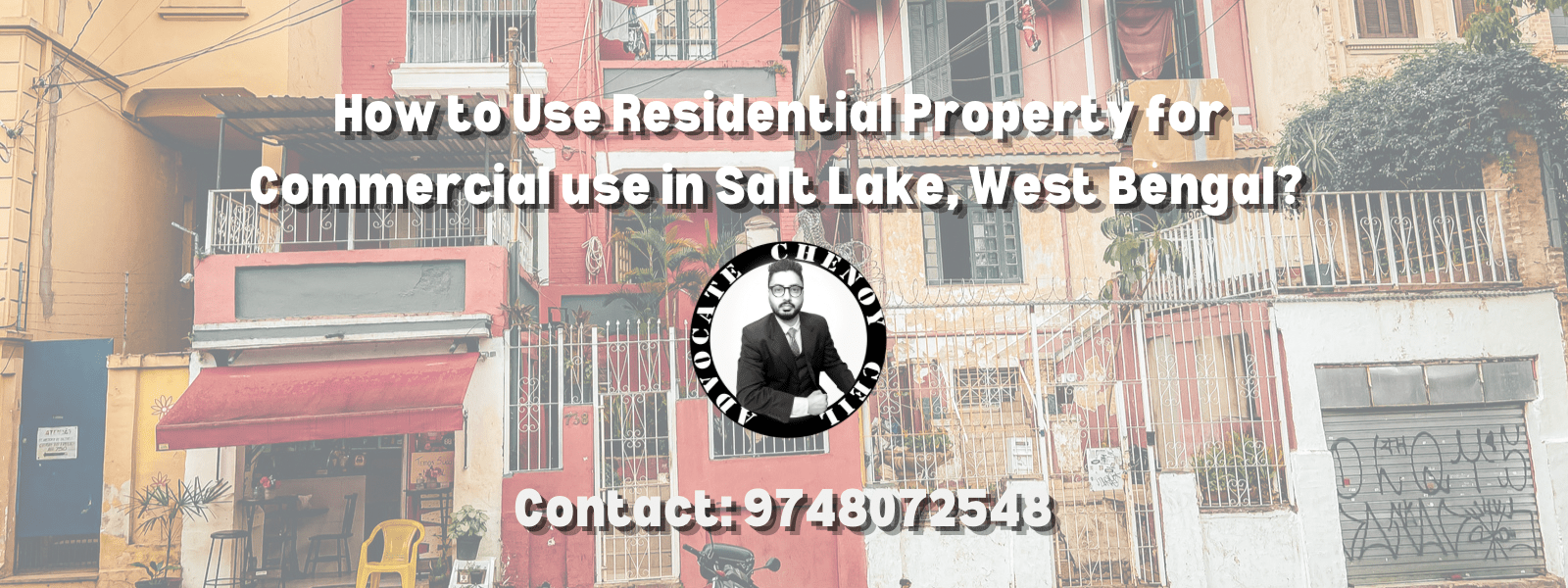
“How to use residential property for commercial purposes in Salt Lake” has always been the most frequently asked question by the residential property owners of Salt Lake, Bidhannagar, West Bengal.
Read More